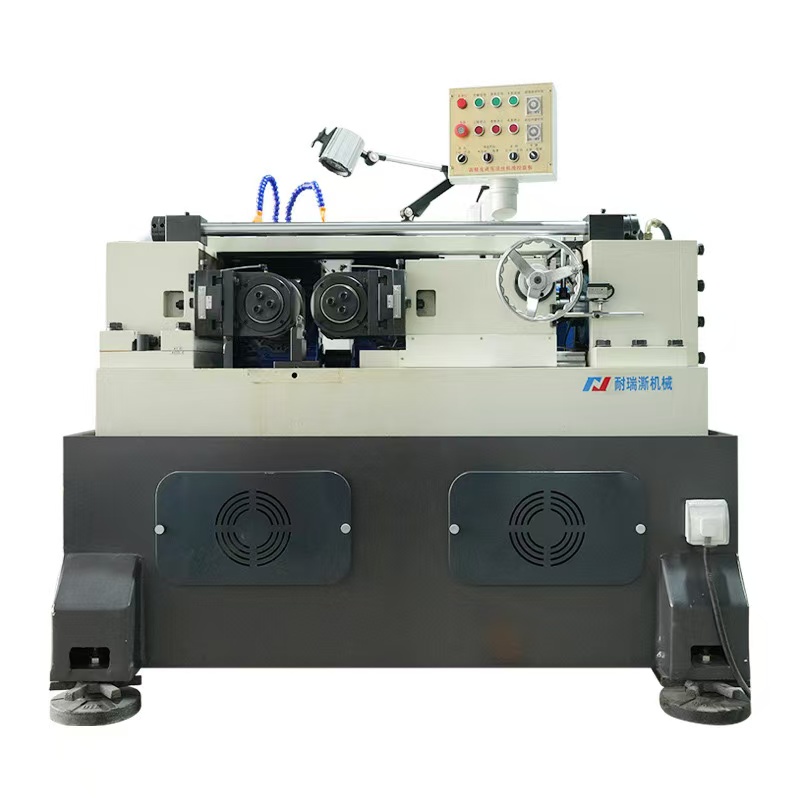The working principles of Thread Rolling Machine
2025-06-09
The Thread Rolling Machine is a cold-forming machine used to produce external threads on round workpieces (like bolts, screws, or rods) by pressing them between hardened dies. Unlike cutting threads, this method displaces material to form threads, making them stronger and more precise. Here's how it works:
Working Principles of Thread Rolling Machine
Material Preparation:
The workpiece (usually a metal rod or blank) is cut to the required length.
It is typically annealed for better malleability if necessary.
Feeding the Workpiece:
The rod is fed manually or automatically into the machine between thread rolling dies.
Thread Rolling Process:
The core principle is plastic deformation, not cutting.
The workpiece is rolled between two or three hardened steel dies with the negative thread profile:
Flat die machines:
One die is stationary; the other moves linearly.

Circular die machines:
Two rotating dies roll the workpiece between them.
Planetary dies:
Multiple dies rotate around a central workpiece for high-volume production.
High pressure causes the metal to flow into the shape of the die, forming the thread pattern on the rod’s surface.
Completion:
Once the thread is fully formed, the machine ejects the finished part.
No material is removed; it's just reshaped.
Advantages of Thread Rolling
High strength threads due to cold work hardening and grain flow.
Smooth surface finish for better fatigue resistance.
No material wastage (unlike thread cutting).
Faster and more efficient for mass production.
Applications
Manufacturing of threaded fasteners (bolts, screws, studs).
Automotive, aerospace, construction, and mechanical industries.
If you are interested in our products or have any questions, please feel free to contact us.


